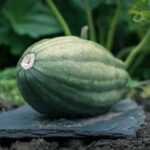Marigolds are not only beautiful additions to your garden but also serve as a beneficial companion for your vegetable plants. In this article, we will delve into the various advantages of incorporating marigolds in your vegetable garden. From pest control to enhancing the aesthetic appeal, marigolds play a significant role in promoting the health and vitality of your vegetable crops.
One of the key benefits of planting marigolds in your vegetable garden is their natural pest-repellent properties. These vibrant flowers can help protect your vegetable plants from harmful insects and nematodes, reducing the need for chemical pesticides. Additionally, we will discuss how to select the right marigold varieties for your specific garden needs and provide valuable insights on planting and caring for these resilient flowers.
Furthermore, we will explore the concept of companion planting with marigolds and how certain vegetables thrive alongside these cheerful blooms. Whether you are a seasoned gardener or just starting out, learning about the synergy between marigolds and vegetable plants can greatly enhance the productivity and beauty of your garden. Stay tuned for expert tips on maximizing the potential of marigolds in your vegetable garden.
The Role of Marigolds in Pest Control
When it comes to maintaining a healthy and thriving vegetable garden, pest control is essential. One natural and effective way to protect your vegetable garden from pests is by incorporating marigolds into your garden. Marigolds are not only beautiful additions to any garden, but they also serve as a natural deterrent for many common garden pests. Here are some ways in which marigolds can help protect your precious vegetable plants:
- Repelling Nematodes: Marigolds release chemicals from their roots that repel nematodes, which are microscopic worms that can damage the roots of vegetables such as tomatoes, carrots, and cucumbers.
- Attracting Beneficial Insects: Certain varieties of marigolds, such as the French marigold (Tagetes patula), attract beneficial insects like ladybugs and lacewings, which prey on harmful garden pests like aphids and caterpillars.
- Masking Scents: The strong scent of marigolds can also help mask the smell of plants that are attractive to certain insects, making it difficult for pests to locate their preferred host plants.
By incorporating marigolds into your vegetable garden, you not only add a pop of color and beauty, but also create a natural barrier against destructive pests. Whether you choose to plant them along the borders of your garden or among your vegetable crops, marigolds can play a crucial role in protecting the health and productivity of your beloved plants.
In order to maximize the benefits of marigolds in pest control, it’s important to carefully select the right varieties for your specific needs. Some marigold varieties are more effective at repelling pests than others. Understanding the different types of marigolds and their unique properties will help you make informed decisions when choosing which ones to plant alongside your vegetables.
Choosing the Right Marigold Varieties for Your Vegetable Garden
When it comes to choosing the right marigold varieties for your vegetable garden, it’s important to consider the specific needs of both your plants and your garden space. With a wide range of marigold cultivars available, it can be overwhelming to decide which types are best suited for your vegetable garden. However, by understanding the different varieties and their characteristics, you can make informed choices that will benefit both your marigolds and your vegetables.
Traditional Marigold Varieties
Traditional marigold varieties, such as French and African marigolds, are popular choices for vegetable gardens due to their ability to repel pests and attract beneficial insects. French marigolds (Tagetes patula) are known for their compact size and vibrant blooms, making them ideal for bordering vegetable beds. Meanwhile, African marigolds (Tagetes erecta) are taller with larger flowers and can provide a striking visual contrast in the garden.
Signet Marigold Varieties
Signet marigolds (Tagetes tenuifolia) are another option for vegetable gardens, especially those with limited space. These petite marigolds feature delicate foliage and small, multi-colored flowers that add a whimsical touch to any garden. Signet marigolds are also edible and can be used to enhance the flavor and appearance of salads or other culinary creations.
Marigold Cultivars for Specific Needs
In addition to traditional and signet marigold varieties, there are cultivars specifically bred for certain qualities, such as scent or color. For example, “Lemon Gem” marigolds boast a citrusy fragrance that can deter pests in the vegetable garden while adding a delightful aroma to outdoor spaces.
By choosing the right marigold varieties for your vegetable garden based on these considerations, you can enhance not only the pest management but also the aesthetic appeal of your garden. Whether you opt for traditional French or African marigolds, petite signet varieties, or specialty cultivars like “Lemon Gem,” integrating these vibrant flowers into your vegetable garden can bring numerous benefits that contribute to a thriving and beautiful growing space.
Planting and Caring for Marigolds in Your Vegetable Garden
Marigolds are not only beautiful flowers but also beneficial additions to vegetable gardens. When it comes to planting and caring for marigolds in your vegetable garden, there are a few tips that can help ensure their successful growth and overall health.
First and foremost, it is important to choose the right location for planting marigolds in your vegetable garden. These flowers thrive in full sunlight and well-drained soil, so be sure to select a spot that meets these requirements. Once you have chosen the perfect location, prepare the soil by adding organic matter such as compost to provide nutrients for the marigolds.
When it comes to planting marigolds, it is best to do so after the last frost date has passed. This will give the plants time to establish themselves before the heat of summer arrives. After planting, be sure to water the marigolds regularly, especially during dry periods. However, be careful not to overwater as this can lead to root rot.
In terms of care, deadheading spent flowers will encourage new blooms and extend the flowering season. Additionally, applying a layer of mulch around the base of the plants can help retain moisture and suppress weeds. With proper planting and care, marigolds can thrive in your vegetable garden and provide both aesthetic beauty and pest control benefits.
Companion Planting With Marigolds
Marigolds are not only beautiful additions to any vegetable garden, but they also provide numerous benefits to the other plants around them. When choosing the right vegetables to plant alongside marigolds, it is important to consider their compatibility and the potential advantages they can bring to your garden.
One of the main benefits of planting marigolds alongside vegetables is their ability to repel pests. The strong aroma of marigolds acts as a natural deterrent for insects such as nematodes, aphids, and beetles, which are common threats to many vegetable crops. By incorporating marigolds into your garden, you can help protect your vegetables from these harmful pests without having to resort to chemical pesticides.
In addition to their pest-repelling properties, marigolds also have a positive effect on soil health. They contain a substance called alpha-terthienyl, which has been found to suppress certain types of root-knot nematodes that can damage vegetable roots. This makes marigolds an ideal companion for vegetables like tomatoes, peppers, and eggplants that are susceptible to nematode infestations.
When considering companion planting with marigold varieties, it is essential to select the right types based on the specific needs of your vegetable garden. French marigolds (Tagetes patula) and Mexican marigolds (Tagetes minuta) are particularly effective at repelling pests and protecting neighboring vegetables. Meanwhile, signet marigolds (Tagetes tenuifolia) are known for their compact size and can be used as border plants in raised beds or container gardens.
Overall, incorporating marigolds into your vegetable garden not only adds aesthetic value but also contributes to improved plant health and productivity through natural pest control methods. By strategically planting compatible vegetables alongside different varieties of marigolds, you can maximize the potential benefits and create a flourishing ecosystem within your garden.
| Vegetables | Benefits |
|---|---|
| Tomatoes | Protection from nematodes |
| Peppers | Natural pest control |
| Eggplants | Protection from soil-borne pests |
The Aesthetic Value of Marigolds in Vegetable Gardens
Marigolds not only offer pest control benefits and promote the health of your vegetable garden, but they also add a touch of vibrant beauty to your garden. When strategically planted, marigolds can enhance the aesthetic appeal of your vegetable garden. Their bright and cheerful colors can liven up any space, making your garden a visually pleasing and inviting area to spend time in.
Here are some creative ways marigolds can enhance the beauty of your vegetable garden:
- Border plants: Use marigolds as border plants to create a colorful edge around your vegetable garden. Their golden, orange, and yellow blooms can act as a natural fence that adds visual interest to your garden.
- Mixed planters: Incorporate marigolds into mixed planters alongside other flowering plants or vegetables. The contrast between the different types of foliage and flowers can create a stunning display that adds charm to your garden.
- Hanging baskets: Consider planting marigolds in hanging baskets to add a pop of color at eye level. This will draw attention to their beautiful blooms and elevate the overall look of your vegetable garden.
In addition to their aesthetic value, marigolds also attract beneficial insects such as ladybugs and hoverflies, which help with pollination and pest control in your vegetable garden. By incorporating these vibrant flowers into your garden design, you can maximize both the beauty and functionality of your outdoor space.
Harvesting and Using Marigolds From Your Vegetable Garden
When it comes to harvesting and using marigolds from your vegetable garden, there are a multitude of creative ways to utilize these beautiful and beneficial flowers. Not only do marigolds provide pest control and companion planting benefits in the garden, but they can also be harvested for various uses both indoors and outdoors. From creating homemade herbal remedies to adding vibrant color to culinary dishes, marigolds have a wide range of applications that can enhance your gardening experience.
Creating Herbal Remedies
One of the most popular ways to utilize harvested marigolds is by creating homemade herbal remedies. Marigold flowers have been used for centuries in herbal medicine for their anti-inflammatory and antiseptic properties. You can make a soothing salve or healing ointment using dried marigold petals and other natural ingredients. Additionally, marigold tea can be brewed from fresh or dried flowers and is known for its calming effects on the digestive system.
Adding Color to Culinary Dishes
Another creative way to use harvested marigolds from your vegetable garden is by adding them to culinary dishes for a pop of color and subtle flavor. Marigold petals can be sprinkled over salads, soups, or desserts as an edible garnish. They contribute a hint of citrusy, tangy flavor that complements many dishes. In addition, you can infuse oils or vinegars with marigold petals to add a unique twist to your cooking.
Decorative Crafts and Displays
In addition to their practical uses, harvested marigolds can also be utilized in decorative crafts and displays. Dried marigold flowers can be used in potpourri or floral arrangements to bring a touch of summer into your home year-round. You can also press fresh blooms between heavy books and create framed botanical art pieces or greeting cards.
Whether you are interested in exploring the medicinal properties of marigolds, adding them to your culinary creations, or incorporating them into decorative crafts, there are countless creative ways to utilize these versatile flowers from your vegetable garden. Harvesting and utilizing your marigold blooms not only enhances the beauty of your garden but also allows you to maximize the potential benefits of these lovely plants.
Conclusion
In conclusion, it is evident that incorporating marigolds into your vegetable garden can offer a wide range of benefits. From pest control to enhancing the aesthetic value of your garden, marigolds are a versatile and valuable addition to any vegetable garden. By choosing the right marigold varieties, planting and caring for them properly, and utilizing their companion planting properties, you can maximize the potential of marigolds in your vegetable garden.
The role of marigolds in pest control cannot be overstated. Their natural ability to repel harmful insects and nematodes makes them an invaluable asset in protecting your vegetable garden from destructive pests. Additionally, their vibrant colors can attract beneficial insects such as pollinators, further contributing to the health and productivity of your garden.
Furthermore, the versatility of marigolds extends beyond just pest control. With proper care, they can add beauty and visual appeal to your vegetable garden while also providing you with bountiful blooms that can be harvested and used in various creative ways.
Whether it’s for their practical benefits or their aesthetic value, integrating marigolds into your vegetable garden can truly elevate the overall success and enjoyment of gardening. So don’t hesitate to explore the world of marigolds and discover how they can transform your vegetable garden into a thriving oasis of beauty and productivity.
Frequently Asked Questions
Are Marigold Good for Vegetable Gardens?
Marigolds are good for vegetable gardens because they can help repel certain pests like nematodes and aphids, thanks to the natural compounds they produce. They also attract beneficial insects like ladybugs and parasitic wasps.
What Vegetables Don’t Like Marigolds?
There are a few vegetables that don’t particularly like being planted near marigolds, such as beans and cabbage. These plants may not thrive when planted in close proximity to marigolds due to potential allelopathic effects.
How Close Do You Plant Marigolds to Vegetables?
When planting marigolds in a vegetable garden, it’s recommended to space them fairly close to the vegetables they are meant to protect. Typically, this means planting marigolds 12-18 inches away from the nearest vegetable plants to maximize their natural pest-repelling benefits without overcrowding.

If you’re looking to get into vegetable gardening, or are just looking for some tips on how to make your current garden better, then you’ve come to the right place! My name is Ethel and I have been gardening for years. In this blog, I’m going to share with you some of my best tips on how to create a successful vegetable garden.





